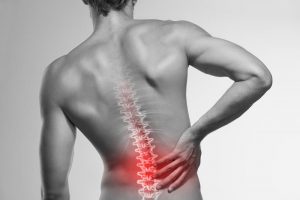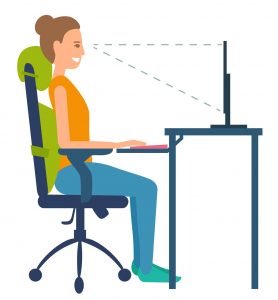 The #1 cause of disability worldwide is low back pain. This problem directly costs $99 Billion annually and indirectly $560-$635 Billion when accounting for lost work and wages1. While back pain may feel debilitating, it doesn’t have to be a life sentence. Most sources of lower back pain are mechanical, meaning it originates due to some movement problem. The three causes of injury are too much motion, insufficient motion, or improper motion.
The #1 cause of disability worldwide is low back pain. This problem directly costs $99 Billion annually and indirectly $560-$635 Billion when accounting for lost work and wages1. While back pain may feel debilitating, it doesn’t have to be a life sentence. Most sources of lower back pain are mechanical, meaning it originates due to some movement problem. The three causes of injury are too much motion, insufficient motion, or improper motion.
Spinal injuries must always warrant immediate attention. The body has an elaborate set of hardwired defenses to notify us of something wrong. Ignoring a signal is like neglecting the wailing fire alarm and smoke from the kitchen. An acute onset of spinal pain must be addressed whether you are working out at the gym or cleaning up around the house.
Red Flags
While most back pain conditions are benign, some severe conditions may present as back pain but require immediate medical attention. If you are currently experiencing any of the following symptoms in conjunction with low back pain, consult with a health professional IMMEDIATELY:
- History of cancer
- Recent fall or accident
- Rapid weight loss
- Signs of infection (fever, chills, sweating)
- Neurologic symptoms (numbness, tingling, muscle weakness, shooting pain)
- Loss of bowel or bladder control
Heat or Ice
 One of the best interventions for sudden and immediate pain is ice. The most effective time window is typically within the first 24 to 72 hours. Ice is a natural analgesic (pain reliever). It also causes your blood vessels to constrict, in turn reducing the amount of swelling and inflammation in the area.
One of the best interventions for sudden and immediate pain is ice. The most effective time window is typically within the first 24 to 72 hours. Ice is a natural analgesic (pain reliever). It also causes your blood vessels to constrict, in turn reducing the amount of swelling and inflammation in the area.
Never apply ice directly to the skin! Ensure a layer of protection, such as a towel, between your skin and the cold source to reduce the risk of skin damage. Apply ice for 15 minutes at a time, allowing at least 20 minutes between cycles.
If you are beyond the 72-hour window, heat may be another option for relief. Heat functions to warm up muscles and reduce muscle tension. The unfortunate caveat is that heat may also cause blood vessel dilation, promoting more inflammation (and, in turn, more pain) to the injured site. Without a professional diagnosis of the type of injury, making an error with ice overheating is always safer. If you do decide to go with heat, apply for 15 minutes at a time, and follow this up with a 15-minute cycle of ice.
Stay Active
Many years ago, bed rest was the prescription for back pain. The logic was simple: if moving hurts, then don’t move. However, as we learned more and more about the neurology of the body and its need for motion, we learned that bedrest not only doesn’t help the back but may make it worse.
Light activities such as walking, swimming, or yoga can help get motion in the body without overdoing it. Avoid more vigorous activities like running or weight training. These are more likely to aggravate your condition.
During any activity, it is always essential to monitor pain levels while you are doing any of these activities. Do not do anything that is going to create more pain. The old phrase ‘No pain, no gain’ need not apply to back pain.
Sleeping Position
We spend almost a third of our day in bed. Could your sleeping positioning be aggravating things? The ideal sleeping position for back pain is typically on your back or side.
We advise placing a pillow beneath the knees if back sleeping is more comfortable. This pillow placement allows the legs to rest appropriately while taking tension off the hamstring. Tight hamstrings will pull on the base of the pelvis, creating stress and pressure across the lower back.
If side sleeping is your preferred method, we recommend placing a pillow between the knees. The pad prevents the knees from rubbing against each other through the night and keeps the pelvis in a neutral position without creating excessive torsion or rotation in the lower back.
Stomach sleeping is never a recommended position for either symptomatic or asymptomatic individuals. First, both “side” and “back” sleeping allow spinal support by the mattress. Stomach sleeping doesn’t provide this support; the spine presses forward instead. A second problem arises from the neck position that accompanies stomach sleeping. Unless you are face down, smothering yourself in the pillow for 8 hours, you’ll likely have your neck maximally rotated to either your left or light. This extended end-range stresses the joints and soft tissue in the neck, increasing the likelihood of developing neck injuries.
Consider your Workplace
Another third of the day is spent sitting at work. Poor posture or small, repetitive movements may be another source of injury. The following is a list of ergonomic recommendations for desk-bound individuals to minimize the stresses placed on the body in the workplace.

- The top of the computer monitor should be at about eye level. Monitor positioning avoids undue strain on the neck muscles, looking downward at the screen.
- Ensure key objects are within arms-length. Do you use the stapler or hole punch throughout the day? Keep it close enough so you are not repetitively leaning and twisting the back to reach.
- Chair positioning is crucial. We recommend The 90 Rule. This rule means each joint in your lower body makes a 90-degree angle.
- Torso and chest are tall and open
- Hips flexed at 90 degrees
- Knees at the same height as the hips
- Feet are directly under the knees and flat on the ground
- Keep a normal arch in the lower back. If your desk chair doesn’t support this, you may use a rolled-up towel or lumbar support in the small of your lower back to help maintain this arch.
Limit the Brace
Manual pressure can often override pain. This physiological phenomenon is evident for anyone who has ever stubbed their knee. Our natural response is rubbing the injured site. This pressure on the knee joint neurologically reduces the pain the brain perceives.
Braces work similarly while providing additional support to the spine. However, we recommend only wearing the brace during strenuous activities that place significant stress on the back. The added support can help you through strenuous exercise, but constant long-term use will cause the muscles underneath the brace to decondition. This deconditioning leads to muscle weakness and will eventually cause more back injuries.
Consult with a Professional
 All the above advice is general tips that may help with an acute bout of low back pain. Without a proper diagnosis from a licensed healthcare professional, it is difficult to determine the exact source of injury, the severity of the injury, and daily habits that may be slowing the healing process.
All the above advice is general tips that may help with an acute bout of low back pain. Without a proper diagnosis from a licensed healthcare professional, it is difficult to determine the exact source of injury, the severity of the injury, and daily habits that may be slowing the healing process.
Chiropractors are trained to deal with injuries from the neuro-musculoskeletal system (nerve/muscle/bone). Our office begins with a thorough health history of the condition(s). We follow this up with a complete orthopedic and chiropractic examination of the body. These exams consist of specific tests to rule in/out conditions and determine the overall mobility and health of the spine. We may also take X-rays of the spine (if medically necessary) to aid in a diagnosis further.
Chiropractic treatment for back pain is research-backed as one of the safest, most effective, and most cost-efficient treatment strategies for managing low back pain. We work to get patients out of pain as fast as possible so they can return to what they love.
At Life in Motion Chiropractic, we build short, customized, and concise treatment plans that target the underlying CAUSE of your pain rather than just treating the symptoms. We may combine any of the following therapies to help patients find relief from their back pain:
- Light chiropractic adjustments
- Muscle and soft tissue work
- Corrective rehabilitative exercises
- Take-home stretches
- Massage therapy
- Intersegmental traction
- Ergonomic modifications and recommendations
Our goal is not just to give you a temporary cover-up but to find the root cause of your injury and fix it. We know your time is essential. This is why we offer same-day and Saturday appointments.
If you want to learn more about chiropractic, please contact us today to schedule a FREE consultation with our chiropractor. Our consultations are one-on-one discussions with the doctor on your condition to determine if you are a candidate for care in our office.
You can schedule your appointment online now by clicking HERE.
Stretches
The following exercises may provide relief from many types of mechanical back pain. A famous physical therapist essentially said this: find a movement that offers relief and keep doing it. If you experience worsening symptoms with the following exercises, DO NOT PUSH THROUGH THE PAIN. Stop the activity immediately and contact a licensed healthcare professional to evaluate your condition further.
Knee-to-Chest stretch: Draw one knee to the chest while lying on your back. Use your hands to pull that knee closer to the chest, focusing on the stretch that you should be feeling in the lower back. Hold this position for 3-5 seconds. Repeat with the other leg.
Press-up exercise: While lying face down on your stomach, put your hands on the ground under your chest in a push-up position. Begin to press your torso upward while keeping the pelvis and lower body flat on the floor. This exercise resembles the ‘Cobra’ position in yoga; however, you don’t want to force yourself with as much spinal extension as the Cobra position. Hold the upward position for a second, then slowly lower yourself flat. Repeat this exercise 10 times.
Face Up Cross-body Piriformis stretch: Begin in a face-up position on your back. Draw a knee toward your chest, and then pull that knee across the body. Keep the rest of the body flat on the ground while pushing the knee towards the floor. You should feel a stretch along the glutes. Hold this position for 5 seconds before returning to neutral. Perform with the opposite leg.
Whether seeking relief from chronic pain or simply aiming for optimal health, your Livonia chiropractor guides you every step of the way. Contact our office to schedule an appointment by Clicking Here or giving us a call today: 734-427-6333

